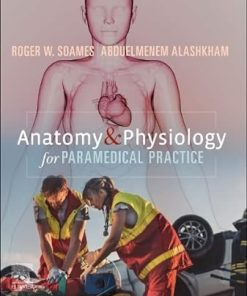Discover the Best Basic Sciences Books to Enhance Your Knowledge
Discover the Best Basic Sciences Books Now!
Are you looking for the best basic sciences books to help you understand the fundamentals of science? Look no further than SurgeryBook.net! Our selection of books covers a wide range of topics, from anatomy and physiology to biochemistry and pharmacology. Whether you’re a student or a professional, our comprehensive collection of books will provide you with the knowledge and skills you need to succeed. Plus, our prices are unbeatable and our customer service is top-notch. So don’t wait any longer – discover the best basic sciences books now at SurgeryBook.net!
Basic Sciences Books
Basic Sciences Books
Family Nurse Practitioner Certification Prep Plus (Kaplan Test Prep) (AZW3 + + Converted PDF)
Basic Sciences Books
Clinical Biochemistry: An Illustrated Colour Text, 7th edition
Basic Sciences Books
Trauma Surgery Essentials: A Must-Know Guide to Emergency Management
Anatomy Books
Biochemistry Books
Krebs: Neue Chancen auf Gesundheit, 2. Aufl Edition (German Edition) (EPUB)
Biochemistry Books
Biotechnology for Waste Biomass Utilization (Original PDF from Publisher)
Biochemistry Books
Biochemistry Books
Biochemistry Books
Marine Biochemistry: Isolations and Techniques (Original PDF from Publisher)
Biochemistry Books
Biochemistry Books
USMLE COLLECTION BOOKS
High-Yield Q&A Review for USMLE Step 1: Biochemistry and Genetics (Original PDF from Publisher)
USMLE COLLECTION BOOKS
High-Yield Q&A Review for USMLE Step 1: Biochemistry and Genetics (EPUB)
USMLE COLLECTION BOOKS
Kaplan USMLE Step-1 Qbank Integrated Plan 6-month Subscription, Full Guarantee (Shared account)
Introduction
Are you looking to enhance your knowledge of basic sciences? Look no further! Discover the Best Basic Sciences Books to Enhance Your Knowledge is here to help. This comprehensive guide provides an overview of the best books available on the subject, from introductory texts to more advanced works. With a range of topics covered, including biology, chemistry, physics, and mathematics, this guide will help you find the perfect book to expand your understanding of the natural world. Whether you're a student or a professional, these books will provide you with the information you need to stay ahead of the curve.
Introduction to Basic Sciences: A Comprehensive Guide to the Foundations of Science
Introduction to Basic Sciences: A Comprehensive Guide to the Foundations of Science is an essential resource for anyone looking to gain a better understanding of the fundamentals of science. This comprehensive guide provides readers with an in-depth look at the foundations of science, from the basics of physics and chemistry to the more complex concepts of biology and astronomy.
The book begins by introducing readers to the scientific method, which is the foundation of all scientific inquiry. It then moves on to discuss the various branches of science, including physics, chemistry, biology, and astronomy. Each chapter covers the basic principles of each field, as well as providing examples of how these principles are applied in everyday life.
In addition to providing an overview of the different branches of science, Introduction to Basic Sciences also offers readers a detailed look at the history of science. It examines the development of scientific thought from ancient times to the present day, highlighting the major milestones that have shaped our understanding of the world around us.
The book also provides readers with an introduction to the tools used in scientific research, such as microscopes, telescopes, and computers. It explains how these tools are used to observe and measure the physical world, as well as how they can be used to analyze data and draw conclusions.
Finally, Introduction to Basic Sciences provides readers with an overview of the ethical considerations involved in conducting scientific research. It discusses the importance of respecting the rights of others, as well as the need to ensure that research is conducted in a responsible manner.
Overall, Introduction to Basic Sciences: A Comprehensive Guide to the Foundations of Science is an invaluable resource for anyone looking to gain a better understanding of the fundamentals of science. With its clear explanations and engaging examples, this book is sure to provide readers with a comprehensive introduction to the world of science.
Exploring the Fundamentals of Chemistry and Physics
Exploring the fundamentals of chemistry and physics is an essential part of understanding the world around us. Chemistry and physics are two branches of science that are closely related, as they both involve the study of matter and energy. Chemistry focuses on the composition, structure, properties, and reactions of matter, while physics deals with the behavior of matter and energy in space and time.
Chemistry and physics are often studied together because they are so closely intertwined. For example, chemical reactions involve changes in the arrangement of atoms and molecules, which can be explained by the laws of physics. Similarly, physical phenomena such as electricity and magnetism can be explained by the principles of chemistry. By studying both disciplines, students gain a better understanding of how the universe works.
The fundamentals of chemistry and physics include topics such as atomic structure, thermodynamics, quantum mechanics, and electromagnetism. Atomic structure involves the study of the smallest particles of matter, including protons, neutrons, and electrons. Thermodynamics is the study of energy and its transformation from one form to another. Quantum mechanics is the study of the behavior of matter and energy at the atomic and subatomic level. Electromagnetism is the study of the interaction between electric and magnetic fields.
In addition to these core topics, students may also explore other areas of chemistry and physics, such as organic chemistry, biochemistry, nuclear physics, and astrophysics. Organic chemistry is the study of the structure and properties of carbon-based compounds. Biochemistry is the study of the chemical processes that occur within living organisms. Nuclear physics is the study of the structure and behavior of atomic nuclei. Astrophysics is the study of the origin, evolution, and structure of the universe.
By exploring the fundamentals of chemistry and physics, students gain a deeper understanding of the world around them. They learn how matter and energy interact, and how these interactions affect our everyday lives. This knowledge can be applied to many different fields, from medicine to engineering. With a strong foundation in chemistry and physics, students can pursue a wide range of career paths.
Understanding Biology and Its Applications
Understanding Biology and Its Applications is a comprehensive introduction to the study of biology. It covers the fundamentals of biology, including cell structure and function, genetics, evolution, ecology, and physiology. The book also explores the applications of biology in medicine, agriculture, biotechnology, and other areas.
The book begins with an overview of the scientific method and how it is used to study biology. It then moves on to discuss the structure and function of cells, including their components and how they interact with each other. This section also covers topics such as metabolism, photosynthesis, and respiration.
The book then delves into genetics, discussing the structure of DNA, gene expression, and genetic engineering. It also covers the principles of evolution, including natural selection, adaptation, and speciation.
The book then looks at ecology, which is the study of interactions between organisms and their environment. Topics covered include population dynamics, food webs, and biodiversity.
The book then examines physiology, which is the study of how living organisms work. It covers topics such as homeostasis, nervous system, endocrine system, and muscle physiology.
The book then looks at the applications of biology in medicine, agriculture, biotechnology, and other areas. It discusses how these fields use biology to improve human health, increase crop yields, and develop new products.
Finally, the book provides an overview of the ethical considerations associated with the use of biological knowledge. It discusses topics such as animal testing, cloning, and genetic engineering.
Understanding Biology and Its Applications is an essential resource for anyone interested in learning more about the science of biology. It provides a comprehensive introduction to the subject, covering all the major topics in detail. It is an invaluable resource for students, researchers, and professionals alike.
Uncovering the Mysteries of Earth Science
Earth science is a fascinating field of study that seeks to uncover the mysteries of our planet. It encompasses a wide range of topics, from geology and oceanography to meteorology and astronomy. By studying Earth science, we can gain a better understanding of how our planet works and how it has evolved over time.
Earth science is an interdisciplinary field that draws on knowledge from many different scientific disciplines. Geologists study the structure and composition of the Earth’s crust, while oceanographers explore the depths of the oceans. Meteorologists observe and analyze weather patterns, and astronomers observe and interpret the movements of celestial bodies. All of these fields are essential for understanding the complex processes that shape our planet.
Earth science also helps us to understand the impact of human activities on the environment. By studying the effects of climate change, pollution, and other environmental issues, scientists can develop strategies to protect our planet and its inhabitants.
The study of Earth science is an ongoing process. As new technologies and techniques are developed, scientists are able to uncover more secrets about our planet. From the formation of mountains to the movement of tectonic plates, Earth science provides us with a wealth of information about our world.
By exploring the mysteries of Earth science, we can gain a greater appreciation for the beauty and complexity of our planet. We can also use this knowledge to make informed decisions about how to best care for our environment.
Applying Mathematics to the Natural Sciences
Applying mathematics to the natural sciences is a process that has been used for centuries to help explain and understand the world around us. Mathematics is a powerful tool that can be used to analyze data, make predictions, and develop models of physical phenomena. It is an essential part of scientific research and is used in many areas of the natural sciences, including physics, chemistry, biology, and geology.
Mathematics is used to describe the behavior of physical systems, such as the motion of planets or the flow of fluids. By using mathematical equations, scientists can predict how a system will behave under certain conditions. This allows them to make predictions about the future and to test theories. For example, physicists use mathematical models to study the behavior of particles and waves, while chemists use mathematical equations to understand the structure of molecules.
Mathematics is also used to analyze data collected from experiments. Scientists use statistical methods to analyze data and draw conclusions from it. This helps them to identify patterns and trends in the data and to make predictions about the future. For example, biologists use mathematical models to study the spread of diseases and to predict how they might evolve over time.
In addition to analyzing data, mathematics is also used to develop models of physical phenomena. These models are used to simulate real-world situations and to test theories. For example, meteorologists use mathematical models to predict the weather, while geologists use mathematical models to study the structure of the Earth's crust.
Finally, mathematics is used to develop new technologies. Engineers use mathematical models to design new machines and structures, while computer scientists use mathematical algorithms to create software programs. In all of these cases, mathematics is used to solve problems and to create new solutions.
Overall, mathematics is an essential part of the natural sciences. It is used to analyze data, make predictions, and develop models of physical phenomena. It is also used to develop new technologies and to solve problems. Without mathematics, the natural sciences would not be able to progress as quickly as they do today.
Conclusion
In conclusion, basic sciences books are a great way to enhance your knowledge and understanding of the world around you. Whether you’re looking for an introduction to a new field or a comprehensive overview of a particular topic, there is a book out there that can help you. With so many options available, it can be difficult to know which books are the best. Fortunately, this article has provided you with a list of some of the top-rated basic sciences books that can help you gain a better understanding of the subject. So, take the time to explore these titles and discover the best basic sciences books to enhance your knowledge.






























